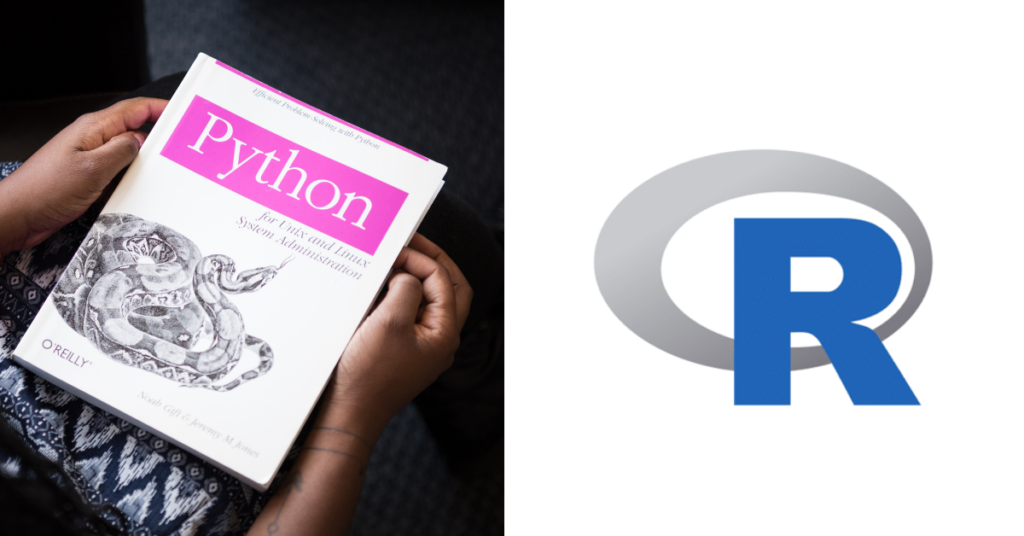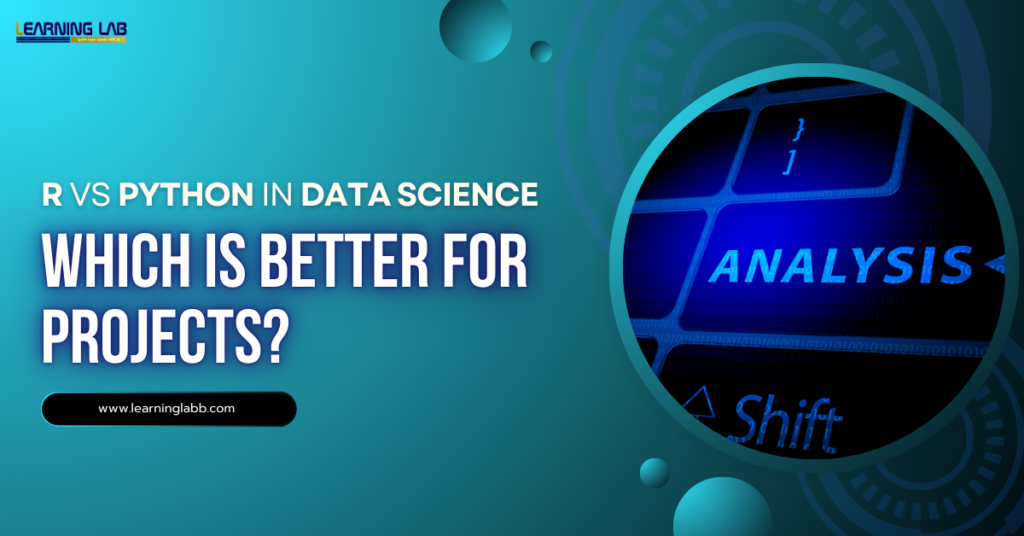R vs Python In Data Science: One of the most common questions asked by beginners and experienced professionals alike is, “Which is better—Python or R for data science?” The choice between these two popular programming languages can shape your data science projects significantly.
Both R and Python in data science have unique strengths and weaknesses, making them more suitable for certain tasks. But what are the specific strengths and weaknesses of these two? Let’s learn more about it here in this blog.
R vs Python In Data Science
R and Python are both powerhouse languages in data science, each with its own set of strengths. Let’s take a closer look at both:
- R was developed primarily for statistical analysis and data visualization. It’s widely used in academia and research for handling complex statistical data. Many data scientists love R for its powerful libraries like ggplot2 and dplyr, which are highly effective for data analysis.
- Python, on the other hand, is a versatile programming language with a vast range of applications. Known for its simplicity and readability, Python is often a go-to language for general programming, machine learning, and artificial intelligence.
But when it comes to R and Python in data science, how do they actually stack up against each other? Is one better than the other?

What Are The Differences Between R And Python In Data Science?
Statistical analysis
- If your data science project heavily relies on statistical analysis, R might be the better choice. It was designed specifically with statisticians in mind and offers an extensive range of statistical tools.
- Python, while versatile, may require additional libraries like SciPy and StatsModels to match R’s statistical capabilities.
Data visualization
- R excels in data visualization, particularly with libraries like ggplot2, which can create complex visualizations with minimal code.
- Python also has strong data visualization tools, such as Matplotlib and Seaborn, but R’s visualizations are often considered more polished out of the box.
Machine learning
- Python has become the go-to language for machine learning and AI. With libraries like TensorFlow, scikit-learn, and Keras, Python is highly effective in developing complex machine learning models.
- While R has machine learning packages like Caret and MLR, Python’s dominance in this area makes it the preferred choice for AI-driven projects.
Ease of learning
- Python is often recommended for beginners because of its straightforward syntax. It reads almost like English, which makes it easier for newcomers to pick up.
- R, while powerful, has a steeper learning curve. The syntax can be more challenging for those who are new to programming.
Data handling and library
- Known for its versatility, Python offers powerful libraries like Pandas, NumPy, and Scikit-Learn, making it ideal for tasks requiring data manipulation, predictive modeling, and machine learning.
- R was specifically created for statistical computing, which gives it an edge in data analysis and visualization. With packages like ggplot2, dplyr, and caret, R is often preferred by statisticians and researchers focusing on data visualization.
If you’re aiming for machine learning, Python is your friend. But if data visualization and statistics are your game, you may find a stronger ally in R.
| Features | R | Python |
| Learning Curve | Moderate to steep | Beginner-friendly |
| Statistical Analysis | Excellent, with specialized libraries | Good, but not as specialized |
| Data Visualization | Highly customizable with ggplot2 | Good with Matplotlib and Seaborn |
| Machine Learning | Limited but growing | Extensive libraries (TensorFlow, etc.) |
| Data Wrangling | Decent | Excellent with Pandas |
As you can see, both languages have their advantages. The difference between R and Python in data science is clear when it comes to the specific needs of the project.
When To Use R And Python In Data Science Projects?
When to Use R in Data Science Projects?
If you’re wondering when R and Python in data science make the most impact, here are cases where R is highly beneficial:
- Statistical modeling: R excels in statistics-heavy applications, making it a favorite for researchers and statisticians.
- Data visualization: With ggplot2 and other visualization libraries, R is perfect for projects that require in-depth, customizable graphics.
- Bioinformatics and healthcare: R is often preferred in these fields due to its roots in statistical computing.
For those interested in gaining expertise in R for data science, Ze Learning Labb offers courses that cover the basics to advanced statistical analysis using R, focusing on real-world applications.
When to Use Python in Data Science Projects?
Python is more suited for data science projects that require:
- Machine learning and AI: Python’s wide range of ML and AI libraries is one of its main strengths, making it ideal for creating scalable models.
- Data wrangling and transformation: Python’s Pandas library is extremely efficient for data manipulation tasks, making it an excellent choice for handling large datasets.
- Application development: Since Python is a general-purpose programming language, it is easier to integrate with web and software applications.
Now that you know the plus and negatives of R and Python, here’s a simple guide to help you decide:
Choose R if:
- Your project involves deep statistical analysis.
- Data visualization is a priority.
- You’re working in an academic or research setting.
Choose Python if:
- You need to develop machine learning models.
- You’re looking for flexibility in a range of tasks.
- Your project involves deployment to production environments.

Which is Better – Python or R for Data Science?
To be fair, the answer depends on the nature of your project. Python is generally better for applications that involve machine learning, automation, and general-purpose programming, while R is ideal for in-depth statistical analysis and visualizations.
For example, if you’re working on a financial data analysis project with a heavy emphasis on statistical models, you may find that R offers the precision tools you need. On the other hand, if you’re building a recommendation engine, Python’s machine learning libraries will likely be more beneficial.
But……Did You Know?
Did you know you don’t actually have to choose between the two? Many data scientists use both R and Python in data science by leveraging tools like RPy2, which allows Python to run R scripts, and reticulate in R, which enables the use of Python within R.
This approach can give you the best of both worlds—using Python for machine learning and R for statistical analysis.
Why You Should Chose Data Science Courses At Ze Learning Labb?
At ZELL, we offer specialized courses in R and Python for data science, designed to make you proficient in both languages. ZELL’s courses not only cover the technical aspects but also emphasize real-world applications, giving you practical experience in R and Python projects.
If you’re still unsure which language to focus on, our expert-led courses will guide you to harness the unique advantages of both languages. Additionally, ZELL provides placement support, connecting you with top employers who value multi-skilled data scientists.
So, why settle for just one language? Become expert in both and widen your career opportunities with ZELL’s data science courses that are industry updated!
On A Final Note…
So, which language should you choose—R and Python in data science? Ultimately, the answer depends on your project requirements and career goals. Python offers versatility and a vast array of libraries for machine learning, while R shines in statistical analysis and data visualization.
At ZELL, our courses give you hands-on experience in both R and Python, empowering you to choose the right tool for the job and make an impact in the data science industry. Ready to explore your potential and land better jobs? Check out our Data Science courses at Ze Learning Labb today!

FAQs
Can I learn both R and Python in data science?
Absolutely! In fact, many data scientists recommend learning both as they complement each other in different types of data science tasks.
What’s the difference between R and Python in data science for beginners?
Python is typically easier to learn and is highly versatile, making it a good choice for beginners. R is a bit more challenging but offers specialized statistical tools that can be useful as you advance.
Which is better – Python or R for data science jobs in India?
Both languages have strong demand in India. However, Python may have an edge due to its popularity in machine learning and AI, which are high-demand skills in the current job market.





